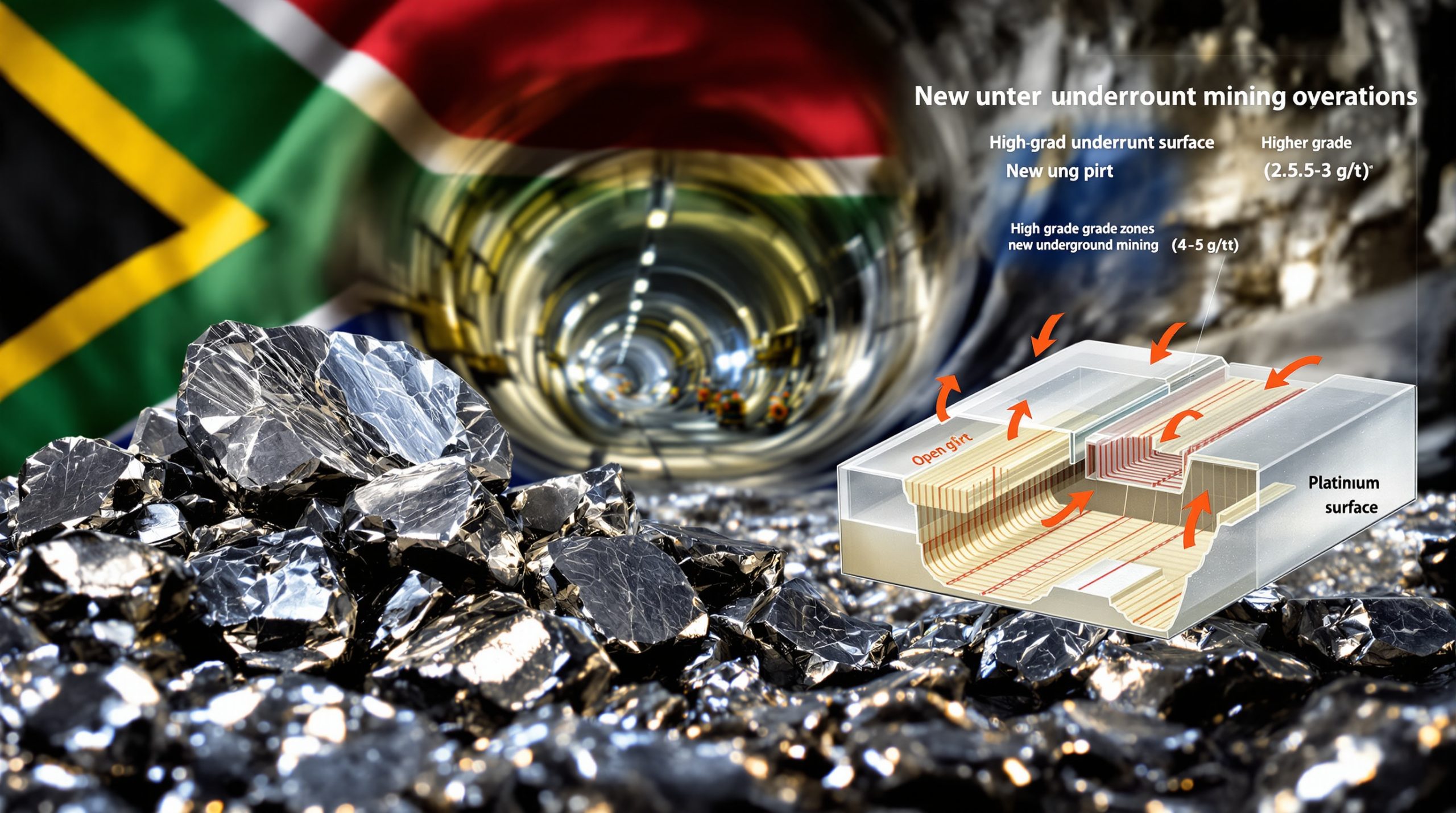Understanding the Structural Copper Deficit: Market Implications Through 2030
The global copper market stands at a critical inflection point, transitioning from periodic surpluses to a persistent structural copper deficit. According to recent market projections from the International Copper Study Group (ICSG), a refined copper deficit of approximately 150,000 tons is expected by 2026, marking the beginning of a multi-year supply shortage. This shift represents more than a temporary market fluctuation—it signals a fundamental restructuring of copper economics driven by converging supply constraints and accelerating demand factors.
The copper deficit isn't merely a cyclical phenomenon but rather a structural imbalance that will reshape pricing mechanisms, investment strategies, and supply chain priorities for years to come. As production growth slows to just 0.9% in 2026 (compared to 3.4% in 2025), the market faces a fundamental mismatch between mining capacity and global consumption needs.
The Emerging Supply-Demand Imbalance
Historical data shows the copper market experienced surpluses of approximately 129,000 tonnes in 2023 and 153,000 tonnes in 2024, according to ICSG reports. The projected reversal to a 150,000-ton deficit represents a dramatic shift in market fundamentals that will persist well into the next decade.
What makes this deficit truly structural is the combination of physical limitations in production capacity, declining geological quality, and ever-extending project development timelines. Unlike previous market cycles where price signals efficiently stimulated new supply, today's constraints cannot be quickly resolved through normal market mechanisms.
Despite copper prices reaching historically elevated levels above $4.00/lb in 2024, the mining industry has failed to respond with significant new production capacity. This price inelasticity underscores the severity of the structural constraints facing producers globally.
Why Is Copper Production Growth Slowing?
Declining Ore Grades Challenge Production Economics
Global copper ore grades have deteriorated dramatically over recent decades, falling from historical averages of 1-2% to below 0.7% in many operating mines. According to S&P Global Market Intelligence, the global average copper ore grade has declined from approximately 1.2% in 1990 to 0.65% in 2024, representing a nearly 50% reduction over three decades.
This decline forces producers to process substantially more material to extract the same amount of copper. The International Energy Agency (IEA) reports that producing the same amount of copper at 0.65% grade versus 1.2% grade requires processing 85% more ore material, dramatically increasing energy consumption, water usage, and waste generation proportionally.
Even major mining companies with multi-billion-dollar reinvestment programs struggle to maintain current production levels rather than expand output. BHP's Escondida mine in Chile, the world's largest copper mine, has seen grades decline from approximately 1.7% in the 1990s to below 0.8% in 2024, according to the company's annual reports.
This creates what industry analysts call the "running to stand still" phenomenon, where billions in capital expenditure merely offset depletion rather than expanding production. The result is a negative feedback loop where copper mining becomes more carbon-intensive precisely when copper is needed for decarbonization technologies.
The grade decline problem is further compounded by metallurgical recovery challenges. As ore quality decreases, recovery rates typically follow suit. A mine processing 1.5% copper ore might achieve 90% recovery, while processing 0.6% ore might only achieve 80-85% recovery, compounding the impact of lower grades on final production volumes.
Capital Intensity Doubles for New Projects
The financial requirements for developing new copper mines have escalated significantly. According to CRU Group, capital intensity has risen from $8,000-12,000 per annual tonne of production capacity in the 2010-2015 period to $15,000-25,000 per tonne in 2024, representing a near doubling of investment requirements.
This escalation creates a substantial barrier to project development, particularly for mid-tier producers and developers without access to premium financing. Only major producers with investment-grade credit ratings can efficiently finance projects exceeding $3-5 billion in capital requirements.
Recent projects illustrate this cost inflation. Rio Tinto's Resolution copper project in Arizona has an estimated capital cost of $7-10 billion for 500,000 tonnes of annual production, equating to $14,000-20,000 per tonne of capacity. Similarly, Teck Resources' QB2 project required $5.27 billion in capital for 316,000 tonnes of annual copper equivalent production, resulting in a capital intensity of approximately $16,700 per tonne.
Multiple factors are driving this cost inflation:
- Mining equipment costs increased 30-40% between 2020 and 2024
- Labor costs increased 25-35% in major mining jurisdictions
- Energy costs increased 40-60% depending on region
- Infrastructure requirements for remote deposits
- Environmental mitigation and remediation costs
The elevated capital requirements have resulted in longer decision-making periods for project sanctioning. Companies conduct more extensive due diligence and require higher confidence levels before committing capital, further extending development timelines.
Permitting Delays Extend Development Timelines
Regulatory approval processes now extend 3-5 years in major mining jurisdictions, adding significant time costs to project development. According to the Fraser Institute's Annual Survey of Mining Companies, the average permitting time for major copper mines in developed jurisdictions has extended from 2-3 years in the 2000s to 5-7 years in the 2020s.
These delays compound financial risks by extending the period between initial capital expenditure and first production, reducing net present values and internal rates of return. The resulting uncertainty deters US copper investment in new supply, even when market fundamentals appear favorable.
Permitting timelines vary significantly by jurisdiction:
- Chile: 3-5 years average
- Peru: 3-4 years average
- United States: 7-10 years average
- Canada: 4-6 years average
- Australia: 3-5 years average
The total timeline from discovery to first production now averages 16-20 years for major copper projects, compared to 10-15 years in the 1990s. Northern Dynasty's Pebble Project in Alaska exemplifies these challenges—discovered in 1987, it remains in the permitting phase 38 years later, with federal permits denied in 2020 and legal challenges ongoing.
Modern Environmental Impact Assessments (EIAs) can exceed 10,000 pages and require years of baseline data collection before submission. Additionally, jurisdictions increasingly require extensive consultation with indigenous communities, local populations, and multiple government agencies. While improving social outcomes, these processes add substantial time and uncertainty to project timelines.
Demand Acceleration: Beyond Traditional Growth Patterns
The Electrification Multiplier Effect
The transportation sector's transition to electric vehicles represents a step-change in copper intensity. According to the International Copper Association, each battery electric vehicle (BEV) requires 85-95 kilograms of copper, approximately four times the 20-25 kilograms used in conventional internal combustion vehicles.
With global EV production reaching approximately 14 million units in 2024 and projected to exceed 50-60 million units annually by 2030 according to BloombergNEF, this transition alone could add 3.25-3.5 million tonnes of incremental copper demand annually by the end of the decade.
The electrification multiplier extends beyond vehicles themselves to include charging infrastructure:
- Each Level 2 charging station: 5-8 kg of copper
- Each DC fast charging station: 20-30 kg of copper
The IEA forecasts global charging infrastructure will reach 70-80 million public charging points by 2030, creating another significant layer of copper demand.
Large-scale EV adoption also requires significant grid infrastructure upgrades. The distribution grid must be reinforced to handle increased electricity demand, particularly in residential areas where overnight charging concentrates load, further intensifying copper requirements.
Renewable Energy Infrastructure Requirements
Renewable power systems demand substantially more copper than conventional generation. According to the International Copper Association, solar installations require 3,000-5,000 tons of copper per gigawatt of capacity, while offshore wind facilities can consume up to 9,500 tons per gigawatt.
The copper intensity varies by renewable technology:
- Utility-scale solar photovoltaic: 3,000-5,000 kg of copper per MW
- Rooftop solar: 4,000-5,500 kg per MW (higher due to distributed nature)
- Concentrated Solar Power (CSP): 4,000-6,000 kg per MW
- Onshore wind: 3,000-4,500 kg per MW
- Offshore wind: 8,000-9,500 kg per MW
Global renewable capacity additions reached approximately 540 GW in 2024 and are projected to reach 700-800 GW annually by 2028, according to the International Energy Agency. This could exceed 1,000 GW annually by 2030, potentially requiring 4 million tonnes of additional copper demand each year—approximately 15-17% of current global copper production.
The copper intensity of renewables extends beyond generation assets to include extensive transmission and distribution infrastructure. Renewable energy integration requires 2-3 times more transmission infrastructure than conventional generation due to the remote location of many renewable resources. High-voltage transmission lines require 10-15 tonnes of copper per kilometer, according to IRENA.
As countries accelerate decarbonization efforts, these infrastructure investments create a new demand layer that compounds traditional consumption growth.
Data Centers and AI: The Emerging Demand Driver
Artificial intelligence infrastructure represents an emerging high-volume use case for copper. Hyperscale data centers require extensive copper for power distribution systems, thermal management, and connectivity infrastructure.
A typical modern hyperscale data center consumes between 100-250 MW of power, requiring massive copper busbars, transformers, and power distribution units. The cooling systems necessary for AI servers, which operate at much higher power densities than traditional servers, further increase copper intensity.
The rapid growth of AI applications is driving unprecedented expansion in data center infrastructure globally. Each new facility requires hundreds of tonnes of copper for:
- Power distribution systems
- Backup power infrastructure
- Cooling and heat exchange systems
- Server interconnects and data cabling
- Grounding systems and electromagnetic shielding
This technology-driven demand adds further pressure to an already constrained supply chain, with limited substitution options available. Unlike other metals, copper's unique conductivity properties make it extremely difficult to replace in these high-performance applications. Furthermore, mining technology advances are still catching up to meet these increasing demands.
How Severe Will the Deficit Become?
Production Growth Projections Fall Short
Recent forecasts from Wood Mackenzie indicate refined copper production growth will slow to just 0.9% in 2026, compared to 3.4% in 2025. This deceleration occurs precisely when demand acceleration requires the opposite trend, creating a widening gap between market requirements and available supply.
The mining sector's chronic inability to deliver new production, even amid strong pricing signals, highlights the structural nature of the deficit. Despite copper prices averaging well above $4.00 per pound in recent years, the pipeline of new projects remains insufficient to meet projected demand growth.
Major producers are increasingly focused on extending the life of existing operations rather than developing new assets. This "brownfield bias" reflects the economic reality that incremental expansions carry lower risk and capital intensity than greenfield developments, but it cannot fully address the scale of the looming deficit.
The Price Response Mechanism
The copper market's transition from surplus to deficit is triggering a repricing of the entire cost curve. Incentive prices—the copper price level needed to justify new mine development—are rising toward $4.50-5.00 per pound, compared to approximately $3.00 per pound in previous cycles.
This reset establishes a higher floor price for the metal while potentially increasing price volatility during supply disruptions. The market now requires sustained higher prices to incentivize the development of increasingly challenging deposits with lower grades, greater depths, and more complex metallurgy.
The price floor is further reinforced by rising operating costs across the industry. According to S&P Global Market Intelligence, the industry's C1 cash cost curve has shifted upward by approximately 30% since 2020, driven by inflation in energy, consumables, and labor.
Geographic Concentration of Supply Risk
Production constraints are further complicated by geographic concentration risk. Chile and Peru account for approximately 40% of global copper supply forecast, while China dominates refined copper production.
This concentration creates vulnerability to disruptions from:
- Weather events (particularly drought in Chile affecting water availability)
- Labor actions (increasingly common in South American operations)
- Geopolitical tensions (affecting trade flows and investment decisions)
- Regulatory changes (mining code revisions and tax regime modifications)
The potential for simultaneous disruptions in multiple key producing regions could exacerbate the structural deficit through periodic acute shortages, adding another layer of risk to an already constrained supply picture.
Investment Implications of the Structural Deficit
Capital-Efficient Projects Gain Premium Valuations
In a capital-constrained environment, projects demonstrating exceptional capital efficiency (below $12,000 per tonne of production capacity) are positioned to secure both financing and premium market valuations. Investors increasingly differentiate between projects based on capital intensity metrics rather than focusing exclusively on resource size or grade.
Projects with access to existing infrastructure, including power, water, transportation, and processing facilities, gain significant advantages in development timelines and capital efficiency. This favors brownfield expansions and developments in established mining districts over remote greenfield opportunities.
The most attractive projects combine:
- Low capital intensity (below $12,000 per tonne)
- Competitive operating costs (first or second quartile)
- Clear permitting pathways
- Access to skilled labor and existing infrastructure
- Potential for phased development to reduce initial capital requirements
High-Grade Discoveries Command Strategic Premiums
With fewer than 10 significant copper discoveries in the past decade, high-grade finds in stable jurisdictions command strategic premiums. The exploration success rate has declined as easily accessible deposits are exhausted, creating substantial value for companies that can deliver meaningful resource growth in an environment of geological scarcity.
According to S&P Global, the average grade of new copper discoveries has declined by approximately 25% over the past two decades, making genuinely high-grade discoveries increasingly rare and valuable. Deposits with grades exceeding 1% copper in accessible locations with favorable metallurgy can command significant valuation premiums in both public markets and M&A transactions.
The dearth of significant new discoveries has created a fundamental imbalance between the rate of mine depletion and the rate of reserve replacement. Major producers must increasingly rely on acquisitions rather than organic exploration success to maintain their production profiles, creating opportunities for junior explorers with legitimate discovery potential.
Jurisdictional Stability Becomes a Critical Differentiator
Regulatory predictability and permitting transparency have emerged as critical investment criteria. Projects in jurisdictions with established mining codes, transparent permitting processes, and stable tax regimes attract disproportionate capital flows, even when competing against higher-grade opportunities in less predictable environments.
The Fraser Institute's Annual Survey of Mining Companies consistently shows that policy factors account for approximately 40% of investment decisions, with geological potential accounting for the remaining 60%. This balance has shifted further toward policy considerations in recent years as capital discipline has become a more prominent feature of mining investment strategies.
Tier-1 jurisdictions like Canada, Australia, and the United States benefit from this shift, despite often having higher operating costs than emerging mining destinations. The premium placed on execution certainty and timeline predictability outweighs the potential cost advantages of developing projects in less established mining regions. Recent tariffs impact on copper markets has further complicated the investment landscape.
Future Supply Solutions and Market Adaptation
Brownfield Expansion Prioritization
Mining companies are increasingly prioritizing brownfield expansions over greenfield development to mitigate capital risk and accelerate time to production. These expansions leverage existing infrastructure and permitting frameworks, reducing both capital intensity and development timelines compared to entirely new projects.
Major producers with multiple assets in their portfolios are conducting comprehensive reviews of their existing operations to identify expansion opportunities that can deliver incremental production with minimal permitting risk and capital expenditure. These "low-hanging fruit" projects typically offer superior returns on invested capital compared to greenfield alternatives.
The brownfield focus does have limitations, however. Many existing operations are constrained by physical boundaries, processing capacity limits, or declining grades that cannot be easily overcome. While brownfield expansions can help mitigate the deficit in the near term, they cannot fully address the long-term structural imbalance.
Technology Integration for Resource Maximization
Advanced processing technologies, including artificial intelligence-optimized flotation, enhanced leaching techniques, and precision ore sorting, are being deployed to extract maximum value from declining ore grades. These innovations partially offset grade deterioration but cannot fully compensate for the fundamental geological constraints facing the industry.
Several technological approaches show particular promise:
- Sensor-based ore sorting to reject waste rock early in the processing circuit
- Improved fine-particle recovery systems to capture copper previously lost to tailings
- Enhanced leaching techniques for low-grade and complex ores
- Real-time process optimization using AI and machine learning
- Autonomous mining equipment to improve operational efficiency
While these technologies can improve recovery rates by 2-5% and reduce energy consumption by 10-15% according to industry studies, they represent incremental improvements rather than transformative solutions to the structural deficit.
Recycling Contribution Remains Limited
While copper recycling rates continue to improve, contributing approximately 30% of global supply, secondary production cannot fully address the emerging deficit. The long in-use life of copper products (often 30+ years in infrastructure applications) creates a significant lag between primary production and recycling availability, limiting the near-term impact of circular economy initiatives.
The International Copper Association reports that approximately 80% of all copper ever produced remains in use today, highlighting both the durability of the metal and the challenges in rapidly scaling recycling volumes. Even with perfect collection efficiency, the available pool of end-of-life copper is insufficient to meet incremental demand from new applications.
Recycling economics also favor high-purity sources such as electrical cable and plumbing pipe, while more complex applications like electronics present greater technical challenges for copper recovery. The energy and carbon intensity of recycling remains favorable compared to primary production, but the volume constraints are unavoidable in the context of growing total demand.
Conclusion: The Structural Deficit Era Begins
The copper market's transition from cyclical commodity to strategic scarcity asset represents a fundamental shift in investment dynamics. The projected 150,000-ton deficit in 2026 marks the beginning of a multi-year structural copper deficit that will reshape pricing mechanisms, investment criteria, and strategic priorities throughout the supply chain.
As electrification and digitalization accelerate globally, copper's role as the fundamental enabler of modern infrastructure ensures that demand growth will remain robust. Meanwhile, the mining industry's structural challenges in delivering new supply—declining grades, rising capital intensity, and extended permitting timelines—create persistent headwinds that cannot be quickly overcome.
This convergence of supply constraints and demand acceleration establishes the foundation for a multi-year structural deficit that will fundamentally redefine copper market dynamics through 2030 and beyond. For investors, this transition favors exposure to capital-efficient development projects, high-grade exploration opportunities, and producers with established operations in stable jurisdictions.
The repricing of copper as a strategic asset rather than a cyclical commodity has already begun. As the structural deficit becomes more apparent, this trend will accelerate, creating a new investment paradigm where scarcity economics rather than cyclical factors drive valuation models and capital allocation decisions throughout the copper value chain.
FAQs About the Structural Copper Deficit
What defines a structural deficit in the copper market?
A structural deficit occurs when fundamental, long-term constraints prevent supply from meeting demand over multiple years, regardless of price signals. Unlike cyclical deficits, which resolve through normal market mechanisms, structural deficits persist due to physical limitations in production capacity, geological constraints, and capital allocation challenges.
The International Copper Study Group's projection of a 150,000-ton deficit by 2026 represents such a structural imbalance, reflecting the mining industry's inability to respond adequately to price signals due to declining ore grades, rising capital intensity, and extended permitting timelines.
How much additional copper will electrification demand by 2030?
The electrification of transportation, power generation, and industrial processes is projected to require 5-7 million additional tonnes of copper annually by 2030. Electric vehicles alone could account for 1.5-2 million tonnes of this growth, with renewable energy infrastructure and grid modernization contributing the remainder.
This incremental demand represents approximately 20-30% of current global production, highlighting the magnitude of the supply challenge. The electrification multiplier effect means that even modest adoption rates for technologies like EVs and renewable energy create substantial copper demand due to the metal's significantly higher intensity in these applications compared to traditional alternatives.
Why can't mining companies simply increase production to meet demand?
The mining industry faces multiple constraints that limit production growth: declining ore grades require processing more material for the same output; capital intensity has doubled, making new projects economically challenging; permitting processes extend 3-5 years in major jurisdictions; and fewer significant discoveries are being made despite increased exploration spending.
These constraints create a structural limitation on supply elasticity that cannot be quickly resolved through normal market mechanisms. Even with copper price insights suggesting historically elevated levels, the combination of physical, financial, and regulatory constraints prevents the rapid development of new production capacity that would be needed to match accelerating demand growth.
What copper price is needed to incentivize new production?
Current market analysis suggests incentive prices for new copper projects have risen to $4.50-5.00 per pound, compared to approximately $3.00 per pound in previous cycles. This increase reflects higher capital intensity, extended development timelines, and the need to process lower-grade resources.
The incentive price varies significantly by project type and location. Brownfield expansions might require only $3.50-4.00 per pound, while remote greenfield developments with challenging infrastructure requirements could need $5.00-5.50 per pound or higher to achieve acceptable returns on invested capital.
Can recycling solve the copper deficit?
While recycling contributes approximately 30% of global copper supply, it cannot fully address the structural deficit. The long in-use life of copper products (often 30+ years in infrastructure) creates a significant lag between primary production and recycling availability. Additionally, even perfect recycling efficiency cannot meet incremental demand from new applications.
The International Copper Association notes that approximately 80% of all copper ever produced remains in use today. While this highlights copper's sustainability credentials, it also underscores the limitations of recycling as a solution to near-term supply constraints. As total demand grows, the absolute volume of primary production must increase even if recycling rates improve.
Ready to Capitalise on the Coming Copper Deficit?
Discover actionable investment opportunities in the copper sector before the projected 2026 deficit drives prices higher with Discovery Alert's proprietary Discovery IQ model that instantly notifies you of significant ASX mineral discoveries. Visit our dedicated discoveries page to understand the substantial returns that major mineral discoveries have historically generated for early investors.




